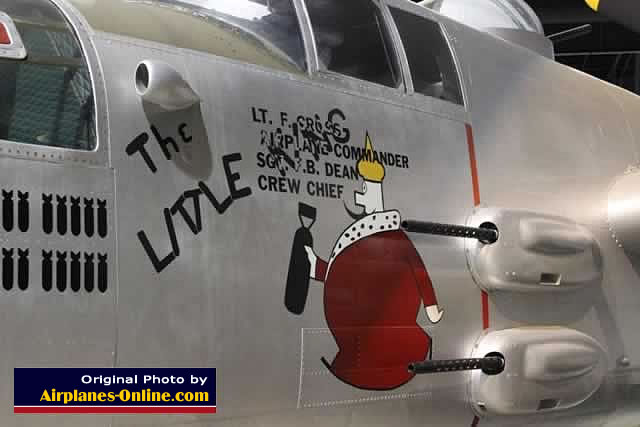Museum of Aviation
The Museum of Aviation is located at Robins Air Force Base in Warner-Robins, Georgia. It is situated on 51 acres adjacent to the base, and is the second largest in the U.S. Air Force museum system. Robins AFB is located in middle Georgia, 100 miles south of Atlanta and 16 miles south of Macon.
It is accredited by the American Association of Museums, and is one of only seven aviation facilities in the United States to earn such a professional distinction.
It is a huge, beautiful facility, and spans several buildings and exhibit areas.
Aircraft on Display
A vast array of historical aircraft, vehicles, engines, missiles and other artifacts are displayed.
Museum of Aviation at Robins Air Force Base, Georgia (staff photo) |
This is a small list of highlights of the vintage planes that are on display:
- Boeing B-25 Mitchell
- Boeing B-29 Superfortress
- B-1B Lancer
- C-47 Skytrain
- C-54 Skymaster
- C-60A Lodestar
- KC-97L Tanker
- C-119 Flying Boxcar
- C-141 Starlifter
- P-40N Warhawk
- P-51 Mustang
- F-84E Thunderjet
- F-102 Delta Dagger
- F-105D Thunderchief
- F-111 Aardvark
- F-4D Phantom II
- F-16A Falcon
- SR-71 Blackbird
- and the list goes on and on!
Admission, Parking and Hours
We highly recommend a visit for aviation enthusiasts, and anyone with an interest in vintage aircraft and the United States Air Force history. It truly is an incredible facility well worth visiting.
It is physically located 10 miles east of I-75 exit 144, at 1942 Heritage Boulevard.
A gate pass onto Robins AFB is NOT required to visit. See map below for detailed location and driving directions.
Parking and admission is free.
It is open daily 9:00 a.m. - 4:00 p.m., and closed on Sunday and Federal Holidays. Also available is an extensive, well-stocked gift shop.
A picnic area complete with pavilions and restrooms, is located on the grounds for use by visiting groups and families. It also caters to special groups, events, meetings and conferences, and rents several rooms and spaces of varying sizes.
Visitors can take self-guided tours of the facility. Guided tours are also available.
Phone 478.926.6870 for detailed information, or visit the official website of the Museum of Aviation.
On our last visit to the Museum, we spent nearly three hours touring the buildings and grounds. But the exhibits are so extensive and well done, that one could easily spend an entire day, and still not see everything.
Photo Highlights
Museum of Aviation at Robins Air Force Base, with two hangars in the background |
 |
Interior view of the Eagle Building |
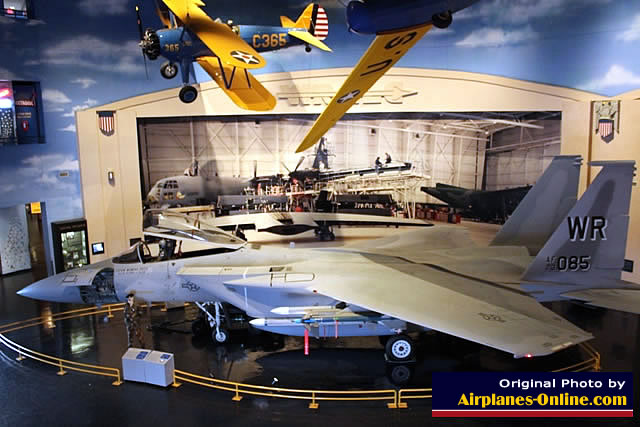 |
B-1B Lancer |
A-10A Warthog 305, Major David A. Flippo |
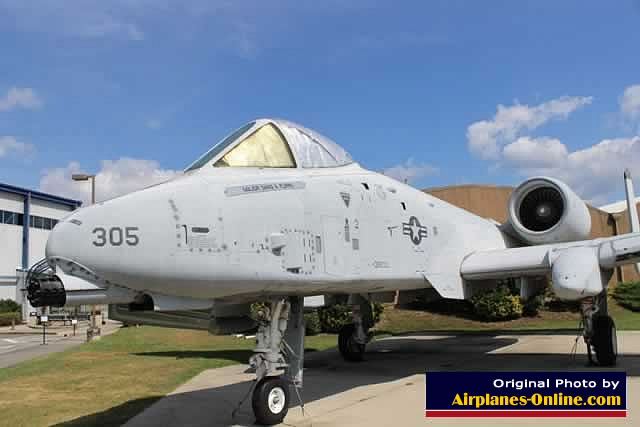 |
B-29 Superfortress, S/N 44-84053 |
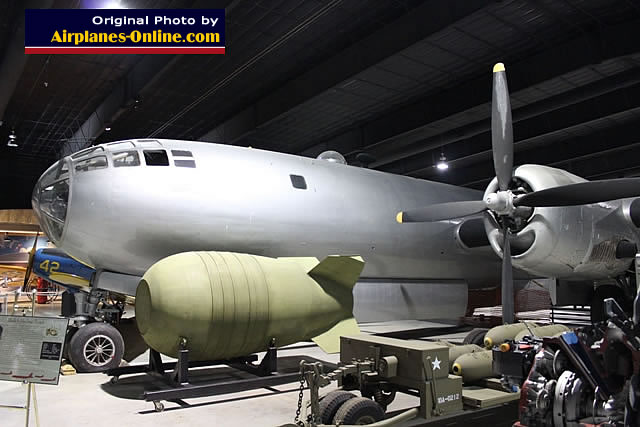 |
P-40N Warhawk, S/N 42-105927 |
 |
F-80C |
 |
T-33A Shooting Star, S/N 53-5199, Buzz Number TR-199 |
 |
P-51D Mustang "Ferocious Frankie" |
 |
F-84E Thunderjet, S/N 51-604, Buzz Number FS-604A |
 |
USAF B-52D Stratofortress, S/N 55-0085 |
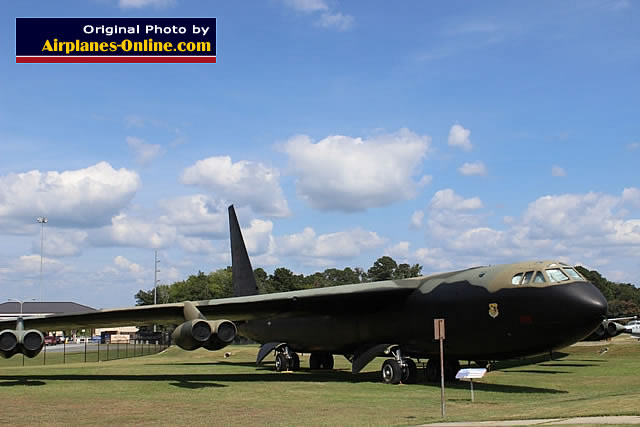 |
F-105D Thunderchief S/N 62-4259 |
 |
Lockheed SR-71 Blackbird S/N 61-7958 |
 |
Lockheed C-141C, 65-0248, of the AFRC, March Air Force Base |
F-102A Delta Dagger S/N 56-1151, Buzz Number FC-151 |
 |
C-124C Globemaster II, S/N 51-089 |
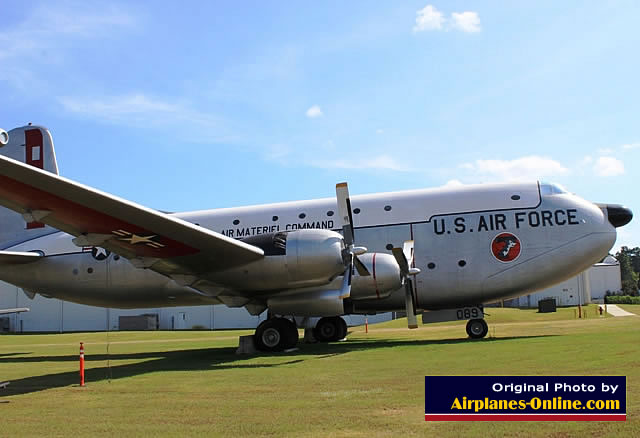 |
C-119 Flying Boxcar, S/N 51-2566 |
 |
Lockheed C-60A Lodestar, 42-55918, "Classy Chassy" |
 |
B-25J Mitchell, S/N 44-86872, "The Little King" |
|
Robins Air Force Base History
The 1935 Wilcox-Wilson bill provided for construction of new army air logistics depots, and in the early 1940s Macon civic leaders, led by Mayor Charles Bowden and supported by Congressman Carl Vinson, convinced the War Department to locate an airfield near Macon. In June 1941, the War Department approved the construction of a depot in middle Georgia dairy-farm country near the Southern Railroad whistle-stop of Wellston. The site was chosen because of its flat lands, artesian water, proximity to a main rail line, and abundant and cheap land and labor.
 Robins Army Air Field, circa 1944 |
Known as the Georgia Air Depot in the beginning, the installation was officially named Robins Field in January of 1942 in honor of Brig. Gen. Augustine Warner Robins, a one of the Army Air Corps' first general staff officers. The town of Wellston was renamed Warner-Robins. Throughout World War II, over 23,000 employees at Robins repaired almost every kind of Army Air Force (AAF) aircraft, including B-17s, C-47s, B-29s, B-24s, P-38s, P-47s, and P-51s.
Its training facilities turned out nearly 60,000 field repair mechanics for every theater of war. The workforce supplied every kind of part necessary to keep AAF planes flying, and maintained thousands of parachutes, aircraft electronic and radio systems, and AAF small arms.
The decades following World War II were a time of change for the base. By March 1946 only 3,900 employees remained. Robins AFB served as a repair facility for B-29s during World War II and after the war a large number of B-29s were put in long-term storage at Robins where they remained until the outbreak of the Korean War when they were returned to service. During the Korean War, Robins workers retooled and fitted hundreds of mothballed B-29 Superfortresses.
Robins later played a key role in the Vietnam War, supplying troops and materiel through the Southeast Asian Pipeline and modifying AC-119G/K and AC-130 gunships. Also playing a role were the C-141, the C-130, the C-123, and the C-124 cargo aircraft, all of which were maintained at Robins. In 1973 these same C-141s supported the resupply of Israel in the Yom Kippur War. In October 1983 C-130s from Robins supported U.S. forces in Grenada. In 1990-91, during the Persian Gulf War, Robins provided record numbers of parts, repairs, and personnel to coalition forces in the Persian Gulf. Robins-maintained F-15 Eagles and the E-8 Joint STARS played key roles in defeating the Iraqi military.
Today, Robins Air Force Base is the home of Warner Robins Air Logistics Center, the 78th Air Base Wing, and more than 60 other units that make up a vital part of the Air Force warfighting team. It is the largest industrial complex in Georgia, employing a workforce of over 25,584 civilians, contractors, and military members. Robins AFB has the largest runway in Georgia and is capable of accommodating the world's largest aircraft, including the C-5B.
Area Map of Warner-Robins, Georgia
The map below shows the location of the Museum of Aviation in the Warner-Robins. It is physically located 10 miles east of I-75 exit 144. Phone 478.926.6870 for detailed information, or visit the official website of the Museum of Aviation.


